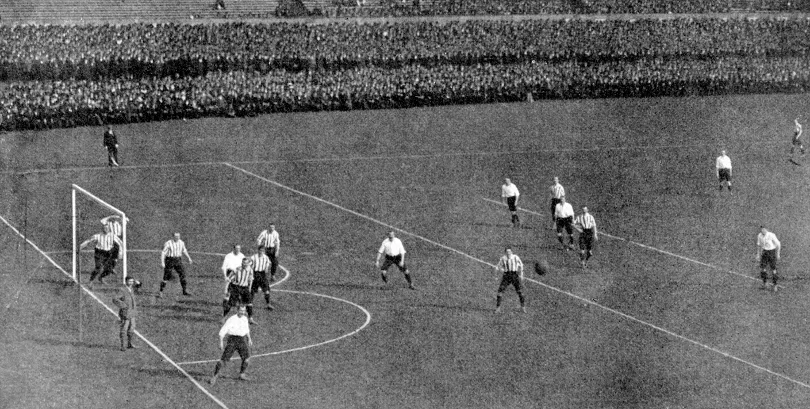The Radical History of the Goalpost
While talking about the history of the goalpost, the football net found its way into the beautiful game primarily for conflict resolution. In most geared-up stages of play, a net is attached or the goalpost t the lower back of the goal frame to catch the ball and register that a goal has been scored. However, the Laws of the Game no longer mandate the use of a net and definitely require that any net used not intervene with the goalkeeper.
The first codified Association Football policies stated that the distance between the posts ought to be eight yards. It has remained the same since, a time-honoured rule upheld by FIFA, among other governing bodies of the game, after joining the IFAB in 1913.
The 1848 Cambridge Rules, in particular, stated that a goal had to be awarded when the ball passed between the upright posts and a string. No signs had been made to mark the width or the pinnacle of the goalposts.
Many used nothing in the area of the crossbar, meaning balls that feted 20-30 meters in the air between the posts had to be marked as goals, resulting in debates as to where the upper mark of the goalpost ought to be.
In the late 1800s, golf tools were used as string or tape in the vicinity of where the crossbar now sits. The tape was used in the first-ever FA Cup final in 1872 as a result, Sheffield football club and Queen’s Park installed them and fought for the bragging rights to be the first club in the world to install an upper goalpost mark. The crossbar became mandatory only ten years after the first FA Cup final when the rules were amended again in 1882.

In the 80s, Ireland argued that an English goal shouldn’t have stood after a 9-1 defeat, as they believed the ball had long gone over the bar and should’ve been illegal. Four years later, in another game between the two, England argued back that Ireland’s second goal in the full-time score of 2-2 was illegal for the same reason.

In the end, it was John Brodie, a scouse engineer who came up with a solution. He had huge pockets on his trousers, so he realized that if the goal posts had similar “pockets” to receive the goal and to avoid further controversies on the matter, it needed to be legalised!
Yorkshire Herald called it a great move: “The goal nets introduced by a Liverpool man were used and were considered by the goalkeeper a very useful introduction.”
Birmingham’s post said: “There was no question about any of the goals scored, and the efficacy of the nets could not be judged.”
In 1891, John Brodie carried out his invention of “New Pockets” in Nottingham. Within a year of the invention, the Football Association integrated them into the Rules of the Game.
Brodie went on to become Liverpool’s city engineer in 1898, and after his death in 1934, the Liverpool city council named the Brodie Avenue in his honour.
Discover more from
Subscribe to get the latest posts sent to your email.


